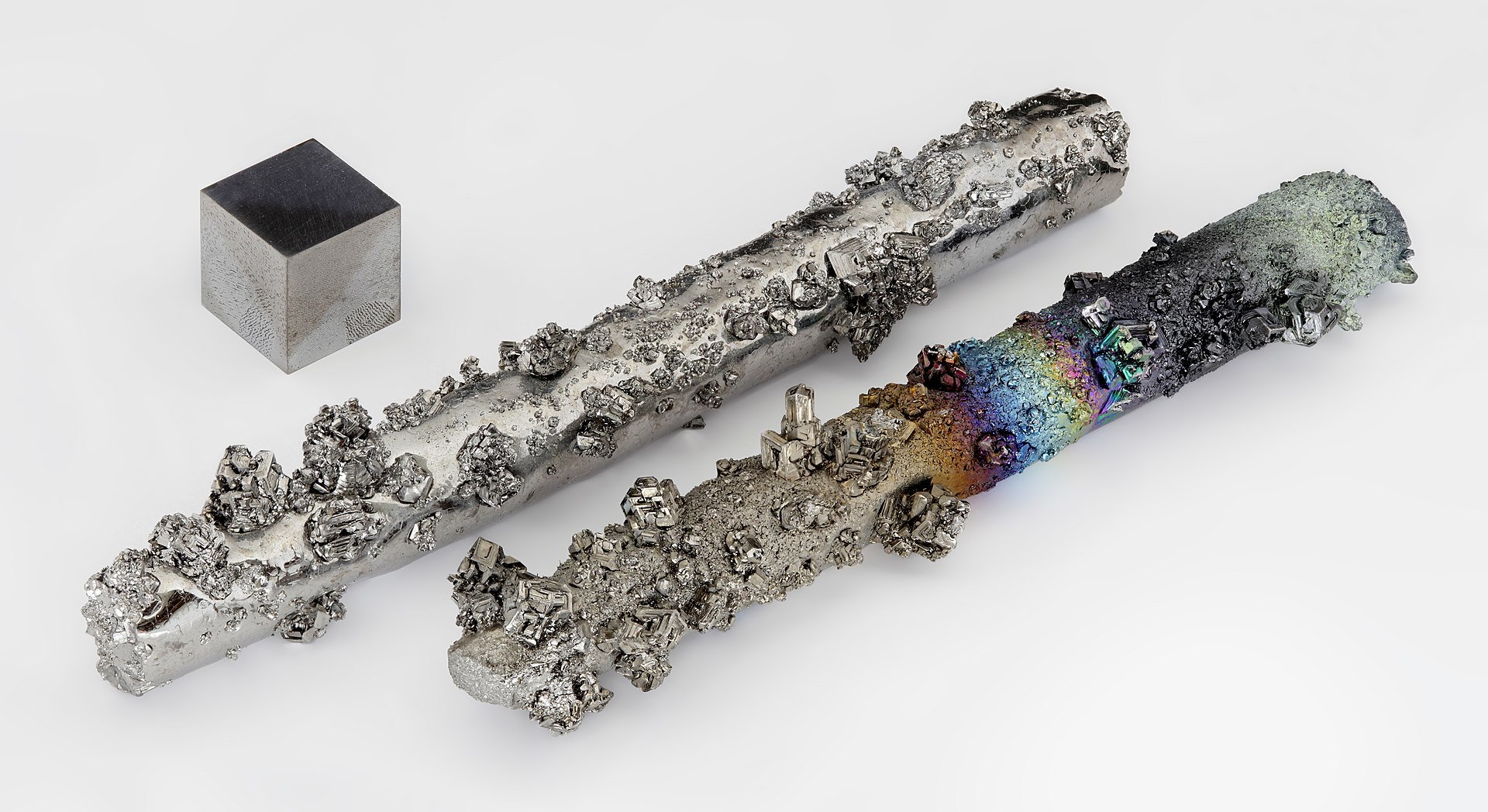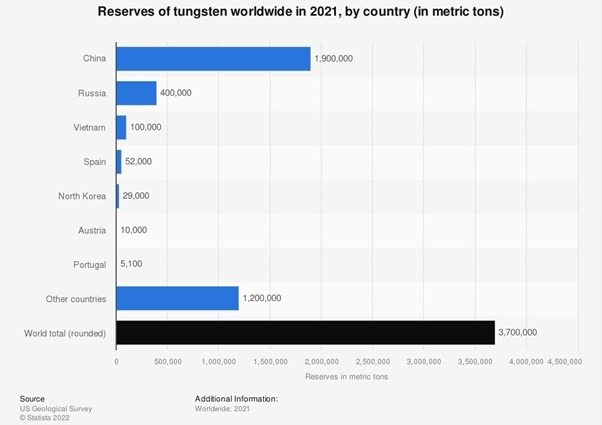When it comes to refractory metals, one of the toughest and most versatile options is tungsten. Despite being a rare metal – only occurring in the Earth’s crust in 1.5 parts per million – and being in high demand for many possible uses around the world, tungsten is surprisingly inexpensive.
As the second-hardest material with the second-highest melting point behind diamond, tungsten is relatively inert, with a high density, corrosion resistance, and electrical conductivity. All of these properties make tungsten metal useful in a variety of industrial and commercial applications.
This blog post looks into the origins of tungsten metal and where you can find tungsten today.
Where was tungsten first found?
Tungsten was first discovered hundreds of years ago. The first mention of tungsten compounds traces back to a German chemist, Johann Gottlob Lehmann, who was studying the mineral wolframite in 1761. This name came from the German ‘wolf rahm’ meaning ‘wolf foam/froth’.
It was first isolated in Sweden in 1781, when Carl W. Scheele produced tungstic acid from a mineral that became known as scheelite. A few years later, in Spain, the Elhuyar brothers Fausto and Juan Jose went further than Scheele to obtain pure tungsten by reducing acidified wolframite in 1783.
While commonly known as tungsten, from the Swedish for ‘heavy stone’, this metal is also known as wolfram from its wolframite source – and the chemical symbol is also W from the German name.
Where is tungsten found naturally?
It’s impossible to find pure tungsten naturally. Tungsten’s abundance is around the same as its fellow refractory metal molybdenum, but it’s only half as plentiful as uranium. Since tungsten is not a free metal, it’s harvested from minerals with a larger proportion of it in their chemical compounds.
The most commonly used tungsten-bearing minerals are scheelite (calcium tungstate or CaWO4) and wolframite (iron–manganese tungstate or (Fe,Mn)WO4). Other less common options include ferberite (iron(II) tungstate or FeWO₄) and huebnerite (manganese tungsten oxide or MnWO4).
These are often mined from rocks underground, occurring in veins of quartz and pegmatites. There are multiple countries around the world with operating tungsten mines, but the majority of global tungsten resources can be found in China, which produces around 80% of the world’s tungsten.
As published by Statista, the other countries with the next highest tungsten reserves are Russia and Vietnam. Tungsten can also be found in Spain, North Korea, Austria, and Portugal, as well as other countries in smaller amounts, such as Bolivia, South Korea, the United Kingdom, and North America.
How is tungsten extracted?
There are two main methods for mining tungsten ores. The first is surface mining, which only requires removing layers of soil and rock, as the ores are close to the surface. The second is underground mining, when shafts and tunnels are built to reach deposits further below the crust.
Rather than being sold as raw ore, tungsten is extracted in several stages to convert it to tungsten oxide, which is heated with either hydrogen or carbon to produce tungsten powder. It can be sold on for further processing if it’s only partially refined.
The process of obtaining tungsten follows the same basic methods developed in the late 1700s – cleaning crushed ores and treating them with alkalis to create tungsten trioxide. At this point, it can either be roasted with hydrogen to produce pure tungsten in powder form, or mixed with other metals in powder form (e.g. nickel) to create an alloy.
What is tungsten used for?
Since it has such a high resistance to most elements, tungsten has many versatile uses for its various forms. The most well-known use is tungsten wire, found in the filaments of incandescent lamps and many other products that require electrodes and electrical components – including heating systems.
Though filament bulbs are more familiar, the most common use of tungsten is actually in carbon compounds. Tungsten carbide forms an even harder metal with an even higher melting point, making it ideal for components of high-speed drilling and cutting tools. These are then used in a range of industries, including the aeronautical, metalworking, mining, and construction sectors.
Tungsten is mostly used in alloys to make other metals stronger and more flexible, forming more hardwearing components for everything from electrical circuits and aircraft parts to ammunition and fishing weights. It’s also a chemical catalyst to produce pigments, lubricants, and semi-conductors.
Another lesser-known use of tungsten metal is as a substitute for gold in jewellery. It’s almost as tough as diamond and has a similar density to gold, yet it’s less expensive, making tungsten an excellent alternative for wedding rings. Historically, it’s even been used to counterfeit gold bars!
Where can you buy tungsten?
Now you know the key points about where to find tungsten, how tungsten is extracted, and what you can use tungsten for. If you’re looking to purchase tungsten, or any other refractory metals, it’s easier than you might think to order tungsten metal online.
It’s best to look around for a specialist supplier of tungsten in your country, as they’ll have industry knowledge behind them, so they can help you find exactly what you need and provide expert advice on the types and uses of refractory metals like tungsten.


